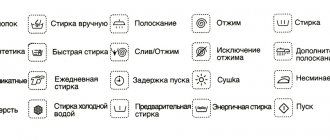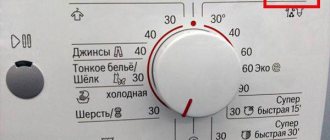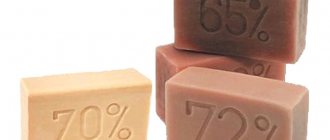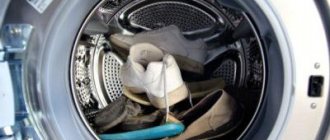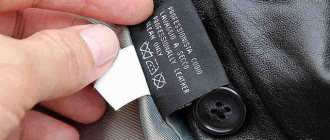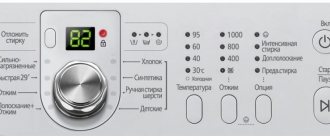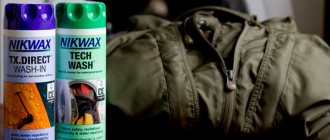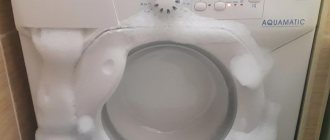A modern washing machine can make life much easier for the housewife. Its versatility allows you to wash materials of various sizes and compositions. The most important thing is to choose the right washing mode. Large items such as blankets and bedspreads require more detailed preparation, and some items are even created exclusively for hand washing. When asking how to wash a blanket in an automatic machine, you should follow some rules. Compliance with them will allow you to obtain a clean product without compromising its quality.
Can it be washed in a washing machine?
Many types of blankets withstand the mechanical stress that an automatic washing machine can deliver. But there are exceptions that cannot be subjected to this type of washing. It all depends on the material from which the blankets are made. Is it possible, for example, to prefer hand washing to machine washing when it comes to synthetic materials? Yes! But this statement will not be true for blankets made from natural materials.
For those blankets that can be washed in an automatic machine, there are several general rules:
- Before you start washing, you should pay attention to what is written on the label of the blanket, so as not to be surprised by unexpected consequences;
- pay attention to the technical features of the washing machine and how many kilograms can be placed in the drum, especially considering that a wet blanket is quite heavy - do not damage the washing machine;
- For washing, it is recommended to use only specially designed products, preferably not powder ones;
- delicate mode only!
If all conditions are met, a blanket washed in an automatic washing machine will not suffer any damage and will serve for a long time to the delight of its owners.
Washing large items
Not every large blanket can be washed in a regular household washing machine. Checking the possibility of the operation is quite simple: if the bedspread is placed in the drum and after that there is still about ¼ of free space, you can safely start washing. The process is practically no different from processing small-sized blankets and consists of the following:
- Pre-clean the product from dust and debris (if any). You can do this with a vacuum cleaner or simply shake it out on the street or balcony.
- The washing mode for large items is no different from the mode for small ones and is set according to the material, or better yet, in accordance with the recommendations on the label.
- If there are pets in the house that can leave traces of fur on the bedspread, you should monitor this point and remove the hairs if they are present.
- Even if there is free space left in the drum of the machine, you should not add anything else there.
Machine washing a blanket at home is not the best option. Most housewives will give preference to handmade ones, unless of course the item is dear to them. Nevertheless, many products tolerate this procedure well and retain a decent appearance for quite a long time.
Additional video instructions for washing a blanket in the washing machine:
How to properly wash a blanket in an automatic washing machine?
Knowing how to properly wash a blanket in an automatic washing machine, you can feel like a real master of fabric products, because this is not such a simple task. To do everything right, you need a little specifics:
- if the maximum load provided for by the technical parameters of the automatic machine is 4.5-5 kg, this will be enough to cope with a thin synthetic blanket or even a double woolen one; if the capacity is less or it is too narrow, it is better not to take risks, but wash it by hand or use dry cleaning, because when wet, the weight of the blanket can increase up to 2-3 times;
- What is important is how it will be folded when loading into the drum: a small blanket can be placed in any configuration, while a large one can be rolled into a tight snail before loading to avoid unnecessary damage;
- When using a liquid laundry detergent (for example, gel), it is better to pour it directly into the drum onto the product - this will allow you to remove dirt more efficiently and contribute to better rinsing of the product;
- the safest spin for blankets that are allowed to spin is 400 rpm; first of all, this will increase the service life of the washing machine itself, and of course it will not spoil an expensive and useful item;
- if there are stains on the blanket that require special effort to remove, you will have to resort to hand washing rather than choosing a less gentle machine wash;
- machine drying for blankets is not used, since this can leave folds and bends on it that can hardly be ironed out, in addition, the structure of synthetic blankets can be greatly damaged by temperature exposure;
- It is not worth giving the product to the care of an automatic washing machine too often, since there is a risk of deformation and loss of the original color: the best option is to resort to machine washing no more than once a month;
- if there have already been incidents when the machine tore things, you should not experiment with such a large thing as a blanket: most likely, it will harm him.
The main thing in washing with an automatic washing machine is choosing the correct temperature mode and the program in which the washing will be performed. It is also important to remember that no matter what material the item is made of, washing it together with other items is strictly prohibited, even if the dimensions of the machine drum allow this. There is a big risk that the item will paint the blanket an undesirable color, and it will become completely unusable.
Blankets made of synthetic materials
Blankets made from artificial materials - be it plush or faux fur - are simply designed to be washed in an automatic washing machine. They tolerate well the mechanical impact that a machine is capable of inflicting, they will never “shrink” and are unlikely (if the item is of good quality) to change color. Unlike blankets made from natural materials, synthetic ones are not so susceptible to damage - an automatic washing machine will not tear or spoil them. But still, it is necessary to be guided by the specific characteristics of the material from which synthetic blankets are made, since the characteristics of care and washing can differ significantly.
Fleece blanket
If fleece is used as the main material of the blanket, then it is unlikely that you will have to put a lot of effort into washing. A fleece blanket is unpretentious, but you should adhere to the following recommendations so that it remains soft and beautiful for as long as possible:
- The program in which you can wash is delicate with a temperature of 20-30 degrees;
- Under no circumstances should you use powder detergents - only liquid ones; you should also not resort to using conditioners or rinse aids, as this may negatively affect the color of the fleece blanket;
- the optimal spin for a fleece blanket is minimal so that the structure is not damaged, but some housewives prefer to avoid spinning altogether;
- It is allowed to dry only in the shade - fleece fades easily, the product can be positioned vertically when drying; drying with a washing machine is completely contraindicated for fleece blankets - they are too delicate and sensitive to temperatures.
The material is not prone to wrinkles, so there is no need to panic and resort to ironing - once it dries, it will straighten out on its own.
Acrylic and polyester blanket
Products made of acrylic and polyester are not subject to frequent contamination, since they are mainly used as bedspreads that do not allow dust and air to pass through, which can be saturated with bad odors. It is very easy to wash such protective blankets in an automatic washing machine:
- select the delicate mode (or hand wash mode): the temperature of these programs is not high and is excellent for acrylic and polyester;
- in order for the product (especially a fluffy blanket) to be more pleasant to the touch and look great after washing, it is recommended to use a softening conditioner when washing, which will also help reduce the static effect that is often manifested in synthetic fabrics used;
- you can use the maximum spin - this will not spoil the item, but it will take less time to dry;
- You can dry it by hanging it vertically on a clothesline or on a drying rack - acrylic and polyester are not prone to stretching or deforming under their own weight.
The polyester product is so unpretentious that with minor dirt you can even resort to the “quick wash” or “hand wash” mode, and spinning will not have any harmful effect. However, it is strictly forbidden to dry it thanks to the possibilities provided by an automatic washing machine, just as it is impossible to place it on radiators for drying, since polyester is afraid of high temperatures.
Faux fur blanket
Faux fur blankets are the most bulky - they are difficult to place in the drum of a washing machine, and you also need to be attentive to the technical parameters of the washing machine, because when wet they are very heavy. How to properly wash a fluffy plush blanket or a “grass” blanket so as not to harm either the automatic machine or your furry pet? Here are a few features:
- delicate mode is perfect for “fluffy” made from faux fur; the temperature should not exceed 30 degrees;
- You can’t squeeze it too hard, otherwise the “fur” may become deformed;
- It is best to dry outside, in the fresh air, and to avoid bending, periodically the product will need to be switched to the other side or moved;
- during drying, when it is almost dry, you can carefully comb it using a soft brush so that all the “hairs” are even and laid in one direction;
Since faux fur has a rather delicate structure, it can be washed no more often than after three months. In between washes, a vacuum cleaner with a small attachment will do a good job of removing dust. If you notice greasy stains on the surface of the blanket, liquid dishwashing detergent can easily remove them. Of course, its use in relation to such a “fragile” thing is doubtful; many housewives resort to this method.
Microfiber blanket
Microfiber is a very pleasant material that holds temperature well, which is why microfiber blankets are very popular. However, such material can often become dirty and the fluffy surface can become crushed. Therefore, washing is inevitable. You can wash microfiber blankets either by hand or using an automatic washing machine. Here are some tips:
- It is permissible to wash only in a delicate cycle;
- the temperature, both when washing by hand and by machine, should not exceed 60 degrees;
- you need to wring out with minimal effort so that the fluffy surface of the blanket is not damaged;
- drying is only possible in a horizontal position, since the wet material will be quite heavy;
- When drying, the blanket should not be left in the open sun.
Viscose plaid
The product, made of viscose, is similar in care to polyester and acrylic blankets. The recommended program is “delicate wash”. Spin can be done at maximum speed, but dry only “naturally”, without resorting to machine drying. For washing, you can use both powder and liquid detergents, because they are washed out quite simply and the fabric is better rinsed. To improve the condition of the blanket, it is possible to add a special conditioner. Unlike applying it to fleece blankets, in this case, conditioner will only be beneficial.
In general, blankets made from synthetic materials tolerate “water procedures” in an automatic washing machine quite well. The only exception, perhaps, is fleece, which can change the original structure due to strong mechanical stress and are very afraid of direct sunlight. To make the fibers of blankets softer, it is permissible to use conditioners specially designed for this purpose.
Types of bedspreads
The conditions for washing bedspreads depend on the characteristics of the fabric. Consider in what mode you can wash the item efficiently without the risk of ruining it.
Tapestry bedspread. It has a complex structure and original appearance. At the same time, the material made from cotton thread is unpretentious - it practically does not fade, is resistant to stain removers, and can be washed at 60 degrees. Fully or partially synthetic tapestry requires delicate washing.
Cotton. Cotton bedspreads are prone to shrinkage if washed at high temperatures. The optimal mode is 40 degrees. Bleach should not be used for colored items.
Terry bedspreads. They are not afraid of high temperatures, but become tough over time. The recommended heating of water in the washing machine is 30-40 degrees. Spin at low speed. When washing, it is advisable to add fabric conditioner to make the product pleasant to the touch.
Faux fur bedspreads and blankets. The fluffy synthetic material can be machine washed at 30 degrees. The product is not wrung out - they wait until the water drains and hang it to dry. This avoids fiber deformation. For the same purpose, do not use drying.
Woolen blankets and bedspreads. They should be washed using the appropriate (“wool”) or delicate cycle. Special powders for woolen fabrics or regular chlorine-free products are recommended. If wrinkles remain after drying, iron the products using steam.
Acrylic. Products made from acrylic fiber are practical - they are easy to wash at any temperature and are undemanding to drying conditions. They retain an attractive appearance for a long time, do not attract dust and dirt, do not tend to wrinkle, and therefore do not require ironing. Random stains can be easily removed with a sponge and a drop of regular detergent on it.
Microfiber. Bedspreads made from this fabric are in growing demand due to the material’s resistance to all types of impact. Dirt from microfiber is washed off without a trace, the fabric does not fade or deform. Wash items at 40 degrees at low speeds, do not use bleach. This fabric is quick-drying.
Knowing how to wash a bedspread in a washing machine, it will not be difficult to maintain the appearance of the textiles in a condition close to ideal.
Blankets made from natural materials
Giving preference to items made from natural materials - wool, silk, cashmere - you need to be prepared to provide them with proper care. In addition to banal pollution, such natural things can be subject to moth “infestations”, they strongly absorb odors, and quickly accumulate dust. Can these blankets be washed in a washing machine?
Yes, but everything and only in the most dire cases. For example, a woolen blanket can only be washed by hand, and even then without much effort. Large “natural” throws are especially difficult to properly care for and clean. In case of total contamination, it is worth remembering that there are dry cleaners that can do all the work without risk. However, if you are enthusiastic enough, you can try washing it yourself. Moreover, difficulties during washing may not arise with all materials.
Cotton blanket
Among products made from natural materials, items made from cotton are considered the easiest to care for. Owners of cotton “coziness” are unlikely to encounter problems with the accumulation of dust in the fabric, sensitivity to environmental odors and difficulties in removing dirt. A cotton blanket can be washed in an automatic machine without any worries. It is enough to install a special program for washing cotton products. Such a thing is not picky about temperature and mode, just like it is about detergent. But it is better, of course, to use a liquid product rather than a powder one. A few recommendations on how to wash a cotton bedspread:
- the item, depending on its size, is folded several times before loading into the drum;
- it will absorb a large amount of water, so you should be especially attentive to the technical parameters of the automatic machine itself - a blanket that has absorbed water may be too heavy;
- It is recommended to use the maximum spin so that the item is well wrung out;
- You can dry a cotton bedspread vertically, simply by hanging it on a clothesline or drying rack.
Silk blanket
A silk bedspread is very delicate, so the effects of an automatic washing machine can destroy it, tearing or crumpling it, since it will not be possible to fold it into a tight snail. In order not to harm it, it is better to resort to full washing as rarely as possible. If stains and dirt are local in nature, you can clean them with a soapy solution using a brush, avoiding rough friction. The solution for such an operation is prepared with the calculation: 1 liter of water/2 tbsp. l. special gel (powder products are prohibited).
Washing by hand requires special care - the blanket should not be wrinkled too much. It’s better to just put it in the bathtub, fill it with warm water (no more than 30 degrees) and dissolve a special liquid detergent. It is permissible to dry a silk blanket only horizontally, so that there are no bends and so that the thing does not look wrinkled, since you cannot resort to using an iron.
Wool blanket
A product made from natural wool is considered the warmest, so lovers of real comfort prefer it over any other. But when buying such a blanket, you need to take into account that a large amount of dust can accumulate in the fabric, and it’s not so easy to remove stubborn odors from it. The woolen “fluffy” is the most problematic in comparison with its “brothers”.
If the contamination is not significant and is local in nature, it is better not to resort to washing in an automatic machine, but to carefully clean the contaminated area with a soap solution (for a better effect, you can add no more than one teaspoon of vinegar to the soap solution). A solution is applied to the fleecy surface of the blanket and the dirt is removed using a soft brush. When resorting to this method, you need to be very careful, since there is a risk of damaging the soft fibers - you should not rub the stain with a brush “to the holes”, but only lightly clean it off.
If it comes to washing, then it is recommended to prefer hand washing to washing in an automatic machine. The mechanical impact that a woolen “fluffy” is subjected to in an automatic washing machine can negatively affect its structure. In addition, after such a “technical” procedure it may look somewhat crumpled, and the villi will look more like icicles. To prevent such an incident from happening when washing by hand, you should listen to the following tips:
- the water temperature should not exceed 30 degrees, otherwise the product may change shape;
- In no case should you use standard washing powder - only liquid shampoos intended for wool, or a solution of shampoos;
- When washing, you cannot exert a strong physical impact on the product - it is better to simply leave it in water for 10 minutes, then rinse carefully;
- You can dry a wool blanket only on a flat surface (for example, horizontally on a dryer), do not bend it or hang it horizontally - the blanket will stretch under its own weight.
Cashmere products are no exception among woolen blankets - they also do not tolerate mechanical stress and require manual care and washing at a temperature not exceeding 40 degrees.
Bamboo blanket
A bamboo bedspread is no less sensitive than a silk one, so the best option for it would be hand washing under the same conditions as for silk. It is strictly forbidden to dry it in direct sunlight - it may lose its original color and become rougher after drying.
If we summarize the features of washing blankets made from natural materials, we can highlight the following key ones:
- the temperature at which washing is done in an automatic washing machine should not exceed 30 degrees on average;
- instead of an intense “mechanical” spin, it is better to prefer a calm, voluntary drainage of water by placing a blanket in the bath and waiting for 10 minutes, then you can wrap the blanket in a terry towel and blot thoroughly;
- priority washing mode – “wool”;
- if you are washing a light-colored blanket, you can also use powdered laundry detergents containing oxygen bleach; a product containing enzymes is suitable for blankets with bright prints;
- In order for the blanket to dry evenly, you need to periodically shake it and turn it over during drying so that no bends appear on the product.
Before washing an item made from natural material in an automatic washing machine, you can soak it in the bathtub in lukewarm water for half an hour.
The best means
In order for the product to wash well, you need to use the right detergent. The only recommendation is to choose a liquid powder or gel.
This form of release is good because the composition dissolves quickly, copes better with dirt, is activated in cool water and rinses well.
Bulk powders are not prohibited from use, but in this case you will have to rinse the item at least 2-3 times.
Most liquid concentrates are universal, that is, they are suitable for caring for ordinary and delicate fabrics, including natural wool and silk.
You definitely need to pay attention to the composition. It should not contain aggressive components such as chlorine bleach or acids
When washing duvets, it is recommended to use detergents containing lanolin. They prevent the formation of lumps, so the filler does not get lost.
Top 3
The range of liquid detergents is varied. When choosing, you need to focus on their price and features of use:
- Washing gel “Weasel wool and silk”. This product is suitable for caring for blankets made of synthetic and natural fibers. It starts working at a temperature of 30 degrees. The harder the water, the greater the consumption of detergent. For 1 liter of gel you will need to pay about 250 rubles.
- Universal washing gel “Synergetic”. The concentrate can be used to care for any products: cotton, synthetics, silk and natural wool. It is suitable for hand and machine washing, does not contain aggressive components, is dosed sparingly, and is used to care for children's bedding. The cost of 1 liter of gel is about 210 rubles.
- Persil freshness washing gel from Vernel. It contains a stain remover, so it is suitable for washing light and white fabrics. The cost of a 1.95 liter package is about 450 rubles.
Do not exceed the dosage of detergent. This will not improve the quality of washing, but will only make it more difficult to rinse foam from fabrics.
What problems can arise after washing in an automatic washing machine and how to prevent them?
The most common problems that can arise after “mechanical” washing are shrinkage or rolling of the fibers. Why is this happening? There are several reasons:
- perhaps the rinsing was insufficient, so the material became hard and fluffy;
- if pellets appear, the reason for this may be the insufficient quality of the material from which the blanket is made or too frequent washing in the washing machine, which affected the structure of the material;
- incorrectly selected mode and temperature;
- errors in drying and spinning, after which the blanket is guaranteed to become deformed.
If the product, after it has been washed, becomes, in the bad sense of the word, unrecognizable, it’s okay, since many mistakes in this situation can be corrected. For example, in the case of pellets, you should resort to removing them using a special machine. Of course, people often use “homemade” methods, removing them with scissors or even a blade, but this is categorically not recommended, since we are talking about delicate materials (even synthetic ones) - you can seriously damage the surface of the blanket and only aggravate the situation.
What is the right thing to do if the blanket shrinks? You can simply try to wash it out. However, during the drying process you will have to periodically stretch it strongly. The main thing is to do this evenly to prevent even greater embarrassment. You can also use a steamer. In this case, you cannot stretch it too much, because after using the steamer the material will be very pliable. We must not forget that it is permissible to steam only from the inside out, so that the external feed is not damaged.
If the material has become very hard or even “needle-like,” most likely it has not been rinsed well. Everything is very simple - all you need to do is rinse it again without resorting to a washing machine.
If you want to get a brand new blanket, first you need to become thoroughly familiar with the care features of the material that will be its basis. It is better to choose based not on beauty, but on whether it will be possible to provide sufficient care so that it remains “in shape” for as long as possible.

